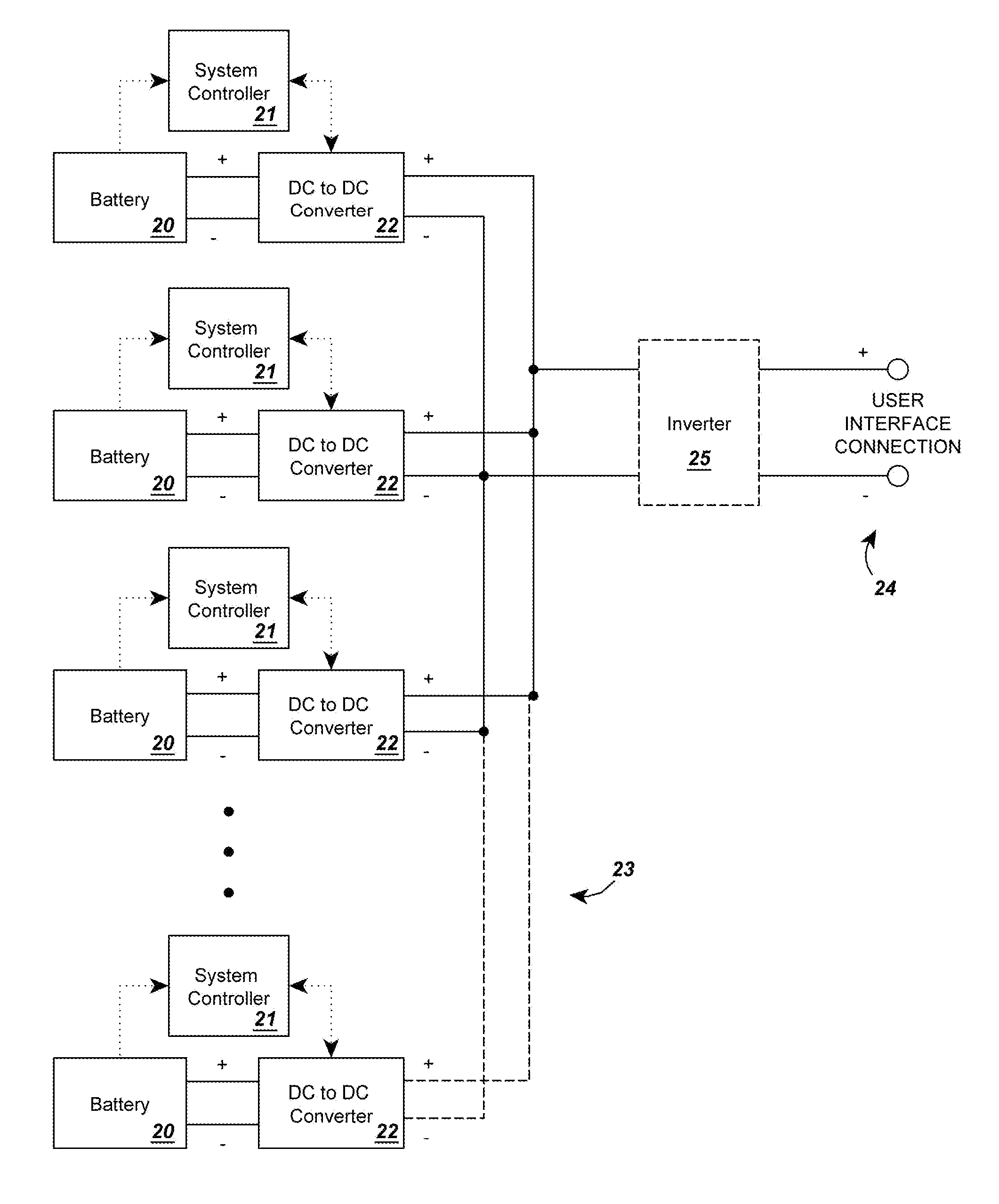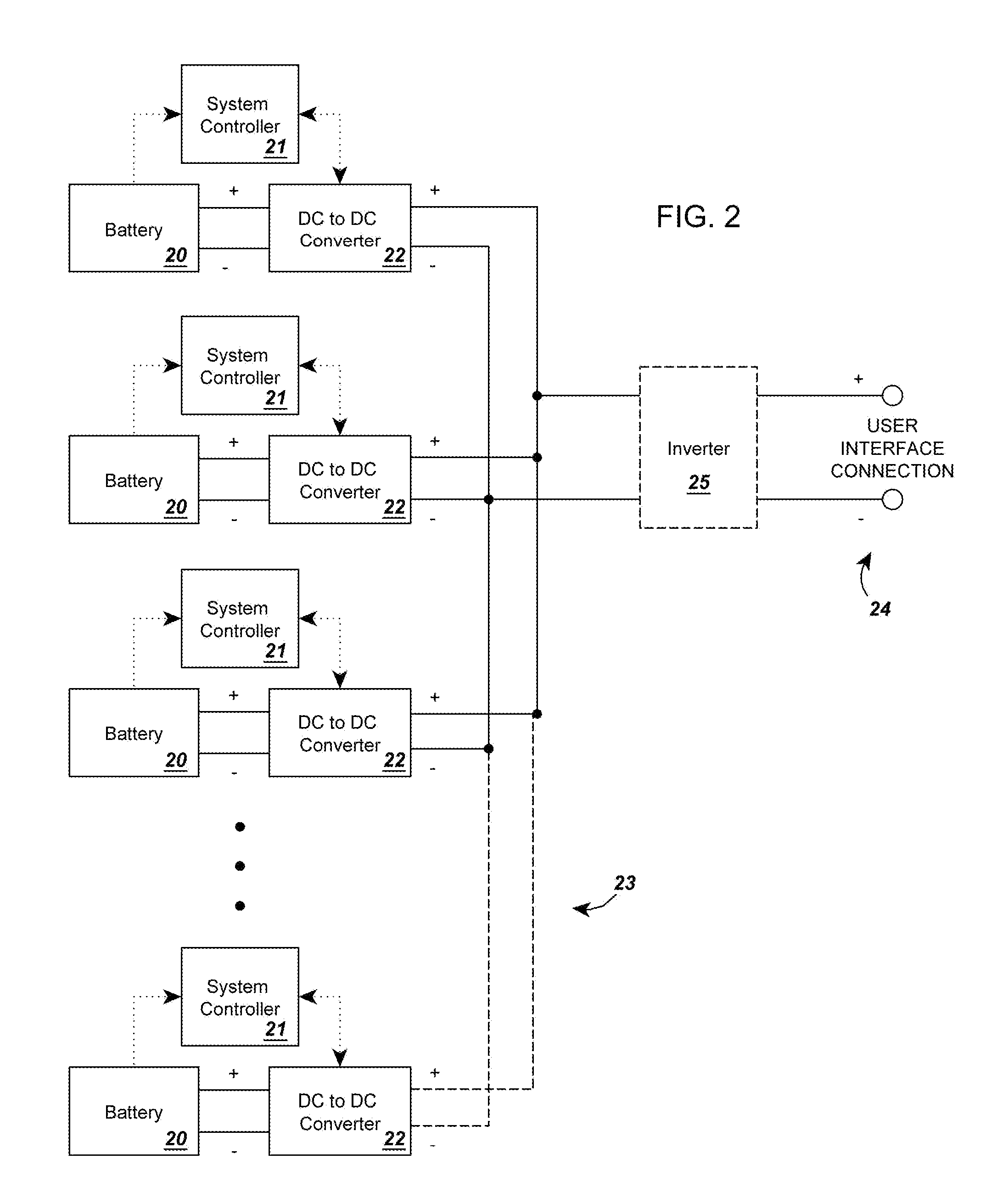Circuit for Rendering Energy Storage Devices Parallelable
a technology of energy storage devices and parallel connections, which is applied in the direction of dc network circuit arrangements, dc source parallel operation, electrochemical generators, etc., can solve the problems of reducing the overall capacity of the battery, reducing the overall capacity, and reducing the cost of recycling a battery. , to achieve the effect of increasing the overall capacity, reducing the cost of recycling a battery, and high charge storage capacity
- Summary
- Abstract
- Description
- Claims
- Application Information
AI Technical Summary
Benefits of technology
Problems solved by technology
Method used
Image
Examples
Embodiment Construction
[0043]Referring now to the drawings, FIG. 1 shows a block diagram of a circuit according to an embodiment of the present invention. Several energy storage devices 1, 2, and 3 are shown connected to an equal number of power adapters 4, 5, and 6. The power adapters 4, 5, and, 6 are connected in parallel to a user interface connection 7. In this embodiment, additional energy storage devices can be added to the circuit, such as energy storage device 8, provided that each energy storage device is connected through an additional power adapter 9 to the user connection 7 via the connections 10 shown as dashed lines. In this embodiment, each parallel block 11 outputs the same voltage to the user interface connection 7, so each parallel block 11 can be added or removed without affecting the other parallel blocks, and properties of each of the energy storage devices 1, 2, 3, and 8 are indistinguishable at the user interface connection 7.
[0044]As used herein, a “connection” refers to a link cap...
PUM
 Login to View More
Login to View More Abstract
Description
Claims
Application Information
 Login to View More
Login to View More - R&D
- Intellectual Property
- Life Sciences
- Materials
- Tech Scout
- Unparalleled Data Quality
- Higher Quality Content
- 60% Fewer Hallucinations
Browse by: Latest US Patents, China's latest patents, Technical Efficacy Thesaurus, Application Domain, Technology Topic, Popular Technical Reports.
© 2025 PatSnap. All rights reserved.Legal|Privacy policy|Modern Slavery Act Transparency Statement|Sitemap|About US| Contact US: help@patsnap.com



